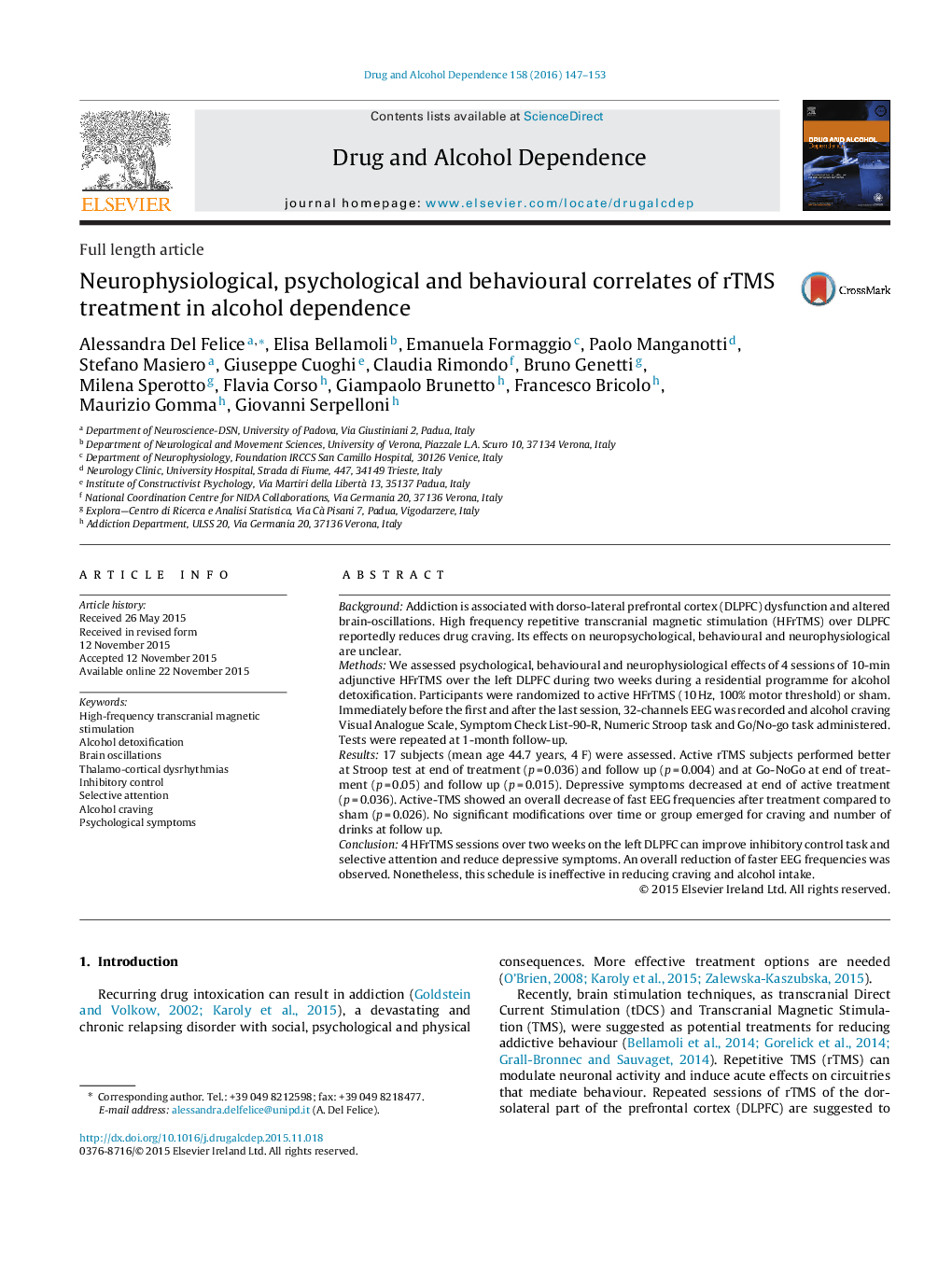| کد مقاله | کد نشریه | سال انتشار | مقاله انگلیسی | نسخه تمام متن |
|---|---|---|---|---|
| 1069751 | 1486133 | 2016 | 7 صفحه PDF | دانلود رایگان |
• HF-rTMS on the left DLPFC (4 sessions over 2 weeks) reduces psychological and behavioural symptoms.
• This stimulation does not reduce craving in alcohol addicted subjects.
• An overall reduction of EEG fast frequencies is observed at rTMS treatment end.
• HF-rTMS different schedules in treating alcohol addiction should be thoroughly studied.
BackgroundAddiction is associated with dorso-lateral prefrontal cortex (DLPFC) dysfunction and altered brain-oscillations. High frequency repetitive transcranial magnetic stimulation (HFrTMS) over DLPFC reportedly reduces drug craving. Its effects on neuropsychological, behavioural and neurophysiological are unclear.MethodsWe assessed psychological, behavioural and neurophysiological effects of 4 sessions of 10-min adjunctive HFrTMS over the left DLPFC during two weeks during a residential programme for alcohol detoxification. Participants were randomized to active HFrTMS (10 Hz, 100% motor threshold) or sham. Immediately before the first and after the last session, 32-channels EEG was recorded and alcohol craving Visual Analogue Scale, Symptom Check List-90-R, Numeric Stroop task and Go/No-go task administered. Tests were repeated at 1-month follow-up.Results17 subjects (mean age 44.7 years, 4 F) were assessed. Active rTMS subjects performed better at Stroop test at end of treatment (p = 0.036) and follow up (p = 0.004) and at Go-NoGo at end of treatment (p = 0.05) and follow up (p = 0.015). Depressive symptoms decreased at end of active treatment (p = 0.036). Active-TMS showed an overall decrease of fast EEG frequencies after treatment compared to sham (p = 0.026). No significant modifications over time or group emerged for craving and number of drinks at follow up.Conclusion4 HFrTMS sessions over two weeks on the left DLPFC can improve inhibitory control task and selective attention and reduce depressive symptoms. An overall reduction of faster EEG frequencies was observed. Nonetheless, this schedule is ineffective in reducing craving and alcohol intake.
Journal: Drug and Alcohol Dependence - Volume 158, 1 January 2016, Pages 147–153
